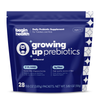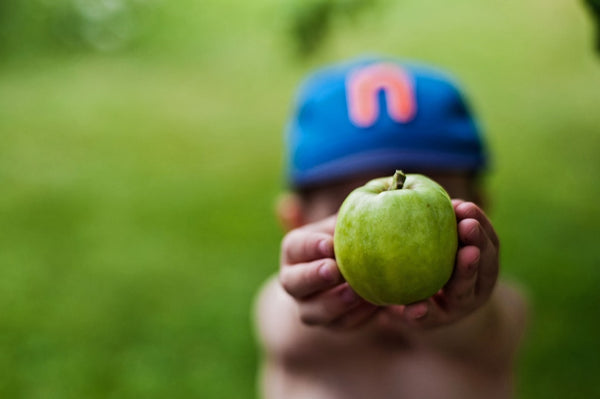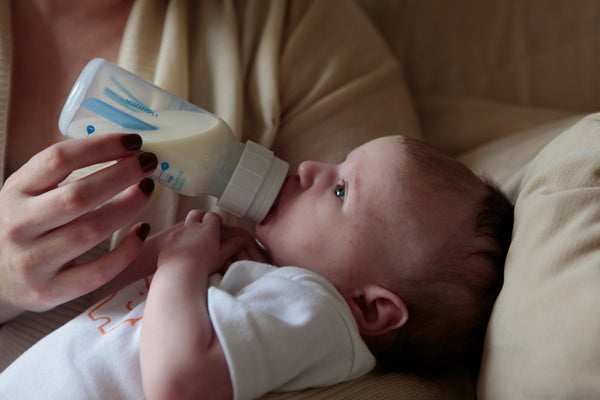The Constipation Crisis in Babies and Kids
share this article

Constipation is a prevalent issue among babies and kids, often leading to significant discomfort and distress.
Understanding the causes, symptoms, and effective solutions for constipation in little ones is crucial for parents seeking to ensure their kids’ digestive health.
In this blog, we will review the data behind the constipation crisis in babies and kids and how it can potentially affect the health of our kids and families.
What is Constipation?
Constipation is characterized by infrequent bowel movements, hard stools, and difficulty passing stools. In babies and kids, this condition can result from a variety of factors including diet, hydration, physical activity, and certain medical conditions.
Daily reads to help your little ones lead happier and healthier lives.
Join the
Happy Gut Club
Prevalence of Constipation in Kids
Constipation is a common issue among young kids, with studies indicating its widespread occurrence:
-
Prevalence Rates: Research published in Pediatrics found that about 3% of visits to pediatric clinics are due to constipation, and it affects up to 30% of kids worldwide [1].
-
Age-Related Incidence: According to a study in the Journal of Pediatric Gastroenterology and Nutrition, constipation is most common in toddlers aged 2-4 years, affecting approximately 25% of kids in this age group [2].
Causes of Constipation in Babies and Kids
Several factors contribute to constipation in babies and kids:
- Diet: A diet low in fiber and high in processed foods can lead to constipation. Kids often consume insufficient fruits, vegetables, and whole grains, which are essential for healthy bowel movements. Additionally, nutrient depletion in soil has resulted in lower levels of essential nutrients in fruits and vegetables, reducing their fiber content and overall nutritional value.
- Quality of Food: Many processed foods contain additives, preservatives, and artificial ingredients that can negatively impact digestive health. Chemicals used in agriculture, such as pesticides and fertilizers, can also affect the nutritional quality of food, leading to poor digestive outcomes. A study in the Journal of Agricultural and Food Chemistry found that these chemicals can alter gut microbiota, contributing to digestive issues like constipation [4].
- Hydration: Inadequate fluid intake is a significant contributor to constipation. Water helps soften the stool, making it easier to pass.
- Physical Activity: Lack of physical activity can slow down the digestive system, leading to constipation. Active play and exercise are crucial for maintaining regular bowel movements
- Psychological Factors: Stress, anxiety, and changes in routine, such as starting school or toilet training, can lead to constipation. Kids might also avoid using the toilet due to fear or discomfort.
Symptoms of Constipation in Kids
Recognizing the signs of constipation in kids is essential for timely intervention:
- Infrequent Bowel Movements: Less than three bowel movements per week.
- Hard, Dry Stools: Stools that are hard and difficult to pass.
- Straining: Difficulty or pain while passing stools.
- Abdominal Pain: Complaints of stomachaches or discomfort.
- Withholding Behavior: Avoiding or delaying going to the toilet.
The Role of Laxatives
Laxatives, such as Miralax, are often prescribed to relieve constipation in kids. Miralax is an osmotic laxative that works by drawing water into the colon to soften the stool and stimulate bowel movements. While effective in the short term, there are important considerations to be aware of:
-
Short-Term Relief: Miralax can provide immediate relief from constipation, but it does not address the underlying causes, such as dietary habits or lack of physical activity.
-
Potential Side Effects: There is growing concern about the long-term use of Miralax in kids. According to a study published in The Journal of Pediatrics, prolonged use of polyethylene glycol 3350 (the active ingredient in Miralax) has been associated with behavioral issues, including anxiety, aggression, and mood swings in some kids [7]. This has led to caution among healthcare providers and parents regarding its long-term use.
-
Behavioral Issues: Anecdotal reports and some studies suggest that Miralax may be linked to neurological symptoms in children, although more research is needed to confirm these findings conclusively. The FDA has received numerous reports of adverse neuropsychiatric events in children taking Miralax, prompting further investigation into its safety [8].
Is your kid ready to wean off laxatives? Here are the 3 signs to look for to know when they are ready.
Effective Solutions for Managing Constipation
-
Diet Changes: Increasing the intake of fiber-rich foods such as fruits, vegetables, and whole grains can significantly improve bowel movements. A study in the Journal of Pediatrics emphasized the importance of a high-fiber diet in managing constipation in kids [3].
-
Hydration: Ensuring that kids drink plenty of water throughout the day can help soften stools and prevent constipation. The American Academy of Pediatrics recommends that kids drink an appropriate amount of fluids based on their age and activity level [5].
-
Regular Physical Activity: Encouraging regular physical activity can stimulate bowel movements. A study in the Journal of Pediatric Gastroenterology and Nutrition found that active kids are less likely to suffer from constipation [6].
-
Routine and Toilet Training: Establishing a regular bathroom routine can help prevent constipation. Positive reinforcement and a stress-free environment during toilet training are also crucial.
-
Medical Intervention: In cases where dietary and lifestyle changes are insufficient, laxatives like Miralax can be used, but with caution and under medical supervision. Long-term reliance on laxatives should be avoided to prevent potential side effects.
Summary
Constipation is a common issue among babies and kids, often caused by dietary factors, inadequate hydration, lack of physical activity, psychological factors, and the quality of food, including nutrient depletion and the presence of chemicals and processed ingredients.
While laxatives like Miralax can provide short-term relief, they do not address the root causes and may lead to behavioral issues with long-term use.
Implementing diet and lifestyle interventions such as nutrition changes, hydration, and regular physical activity, can significantly improve digestive health in little ones.


















